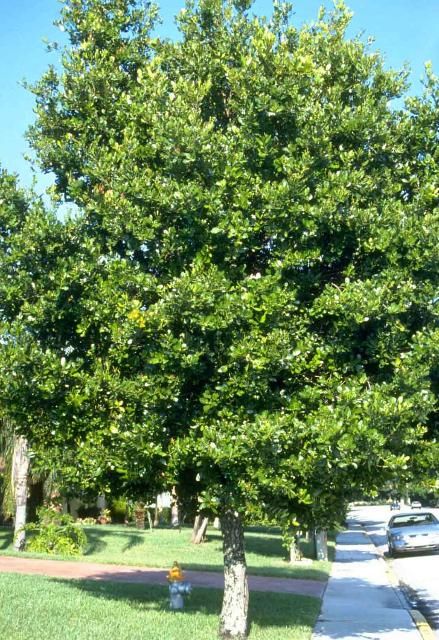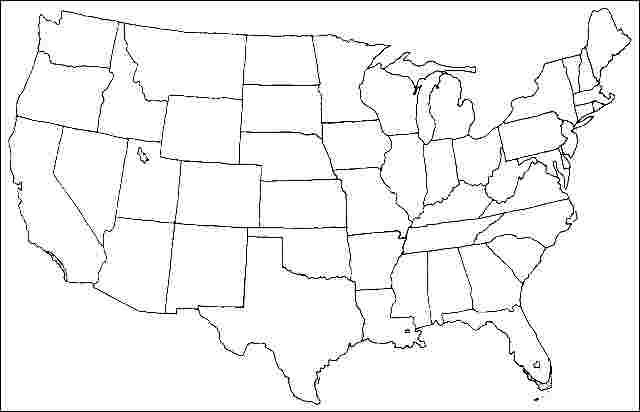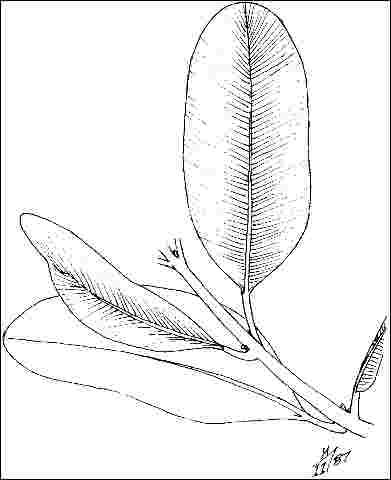Introduction
This upright, bushy, medium- to coarse-textured evergreen tree is densely foliated with 4-inch long, leathery leaves. Although able to reach 50-feet in height in the forest, Santa Maria tends to be a slow-growing, moderately sized tree about 30- to 40-feet tall with a 40- to 50-foot spread. It is well suited for planting beneath power lines 40-feet high. Small, white, fragrant flowers appear on 1- to 2-inch long racemes among the 4- to 6-inch long, glossy leaves. Well suited as a street, parking lot, patio or small shade tree, especially for coastal areas, Santa Maria can also be used as a screen, and can be maintained as a shrub. The stems bleed a yellow latex when injured, and the wood of the Santa Maria tree is valuable for ship building and cabinet work. The bark is almost black and is longitudinally furrowed and quite attractive.

Credit: Ed Gilman
General Information
Scientific name: Calophyllum brasiliense
Pronunciation: kal-oh-FILL-um bruh-sill-ee-EN-see
Common name(s): Santa Maria
Family: Clusiaceae
USDA hardiness zones: 10B through 11 (Fig. 2)
Origin: not native to North America
Invasive potential: little invasive potential
Uses: sidewalk cutout (tree pit); reclamation; specimen; street without sidewalk; deck or patio; screen; shade; hedge; espalier; parking lot island 100–200 sq. ft.; parking lot island > 200 sq. ft.; tree lawn 4–6 feet wide; tree lawn > 6 ft. wide; urban tolerant; highway median; container or planter
Availability: somewhat available, may have to go out of the region to find the tree

Description
Height: 30 to 40 feet
Spread: 40 to 50 feet
Crown uniformity: irregular
Crown shape: oval, round, pyramidal
Crown density: dense
Growth rate: moderate
Texture: coarse
Foliage
Leaf arrangement: opposite/subopposite (Fig. 3)
Leaf type: simple
Leaf margin: entire
Leaf shape: oblong, elliptic (oval)
Leaf venation: pinnate
Leaf type and persistence: evergreen, broadleaf evergreen
Leaf blade length: 2 to 4 inches
Leaf color: green
Fall color: no color change
Fall characteristic: not showy

Flower
Flower color: white/cream/gray
Flower characteristics: showy
Fruit
Fruit shape: round
Fruit length: 1 to 3 inches
Fruit covering: dry or hard
Fruit color: green
Fruit characteristics: does not attract wildlife; showy; fruit/leaves a litter problem
Trunk and Branches
Trunk/bark/branches: branches droop; showy; typically one trunk; thorns
Pruning requirement: little required
Breakage: resistant
Current year twig color: green
Current year twig thickness: thick
Wood specific gravity: unknown
Culture
Light requirement: full sun, partial sun or partial shade
Soil tolerances: clay; sand; loam; alkaline; acidic; well-drained
Drought tolerance: high
Aerosol salt tolerance: high
Other
Roots: not a problem
Winter interest: no
Outstanding tree: yes
Ozone sensitivity: unknown
Verticillium wilt susceptibility: unknown
Pest resistance: free of serious pests and diseases
Use and Management
Santa Maria should be planted in full sun or partial shade on well-drained soil. It has good salt-tolerance and is often seen along the beach. Grows well in confined soil spaces, such as along a street, and the tree should be propagated, sold, and planted in urban areas much more often. Remember that the golfball-sized fruit is poisonous and hard, and this could be undesirable in the landscape under some circumstances. The trunk grows to about two feet in diameter.
Propagation is by seeds or cuttings.
Pests and Diseases
No pests or diseases are of major concern.